Rosemary Sourdough Bread Recipe: A Fragrant and Flavorful Delight for Every Occasion 🍞🌿✨
1. Introduction: The Allure of Homemade Rosemary Sourdough Bread
Welcome to the world of homemade baking with our irresistible rosemary sourdough bread recipe! This delightful loaf combines the tangy richness of sourdough with the aromatic essence of fresh rosemary, making it a perfect companion for your soups, salads, or cheese platters. There’s something truly special about the texture and flavor that comes from baking your own bread. The process of creating your own rosemary sourdough bread is not just about making food; it’s about creating an experience. The distinct aroma filling your kitchen, the satisfying feel of the dough in your hands, and the ultimate taste of a freshly baked loaf make it worthwhile. Follow our step-by-step guide to create a beautiful loaf that’s sure to impress family and friends! Consider pairing this bread with some of our other delightful recipes. You might enjoy it with a bowl of Vegetable Beef Soup. Or if you’re looking for something sweet, check out our Brown Butter Toffee Chocolate Chip Cookies for a perfect dessert.
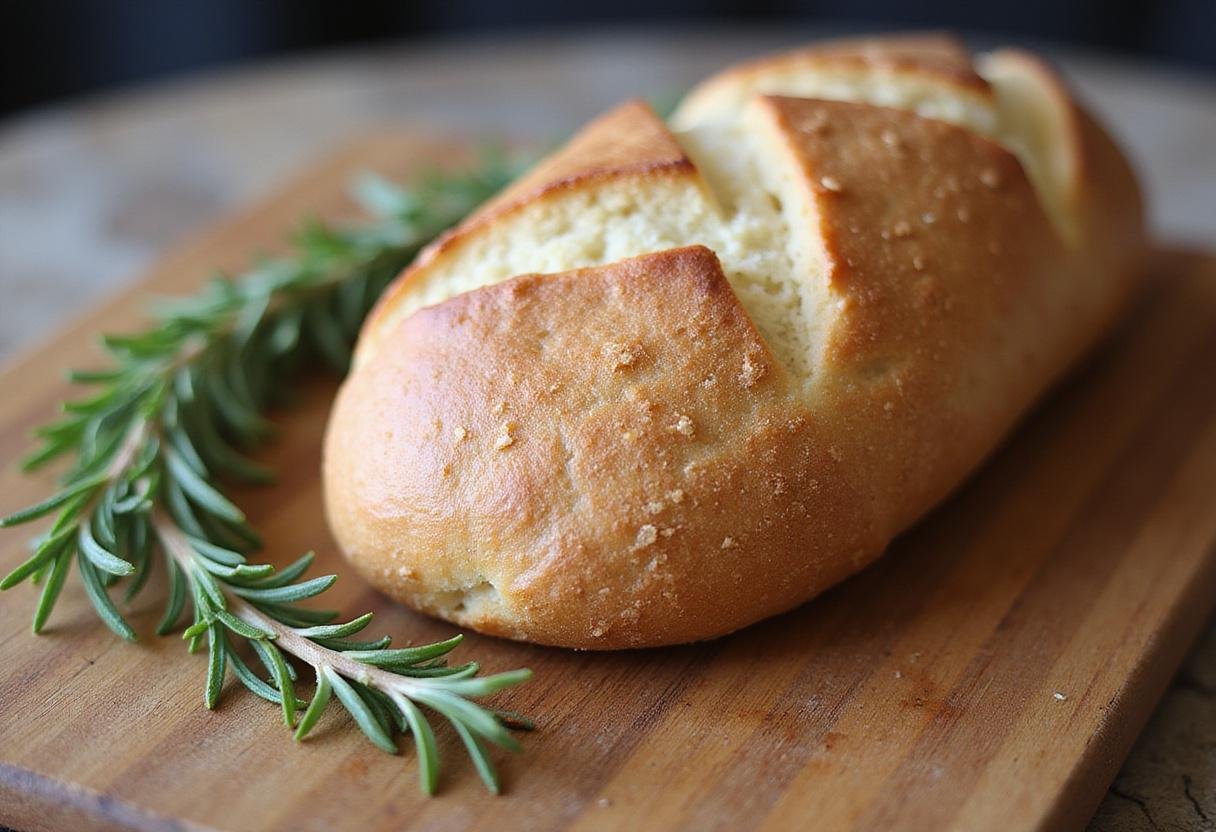
2. Ingredients: What You’ll Need for Your Rosemary Infused Sourdough
To embark on your journey of baking delicious rosemary sourdough bread, gather the following high-quality ingredients. Each component plays a crucial role in achieving that perfect balance of flavor and texture that defines artisan bread.
- 500g bread flour: Use high-protein bread flour for a strong gluten structure, resulting in a chewy interior.
- 350ml water: The water should be lukewarm to activate the sourdough starter effectively.
- 100g active sourdough starter: A bubbly and active starter is key to a well-risen and flavorful loaf.
- 10g sea salt: Salt not only enhances the flavor but also controls the fermentation process.
- 2 tablespoons fresh rosemary, finely chopped: Fresh rosemary provides an aromatic and distinctive flavor that elevates the sourdough to a gourmet level.
Consider this a base recipe. Feel free to experiment! You can try adding a pinch of garlic powder for extra flavor, or even a touch of honey for slight sweetness. If you’re looking for other baking adventures, explore our bread recipes.
3. Instructions: Step-by-Step Guide to Baking Rosemary Sourdough
Step 1: Prepare the Dough – Mixing and Hydrating
In a large mixing bowl, combine the bread flour, water, sourdough starter, and sea salt. Mix until a shaggy dough forms. Add the freshly chopped rosemary and mix until well incorporated. Ensure that the ingredients are thoroughly combined for a consistent flavor profile throughout the rosemary sourdough bread.
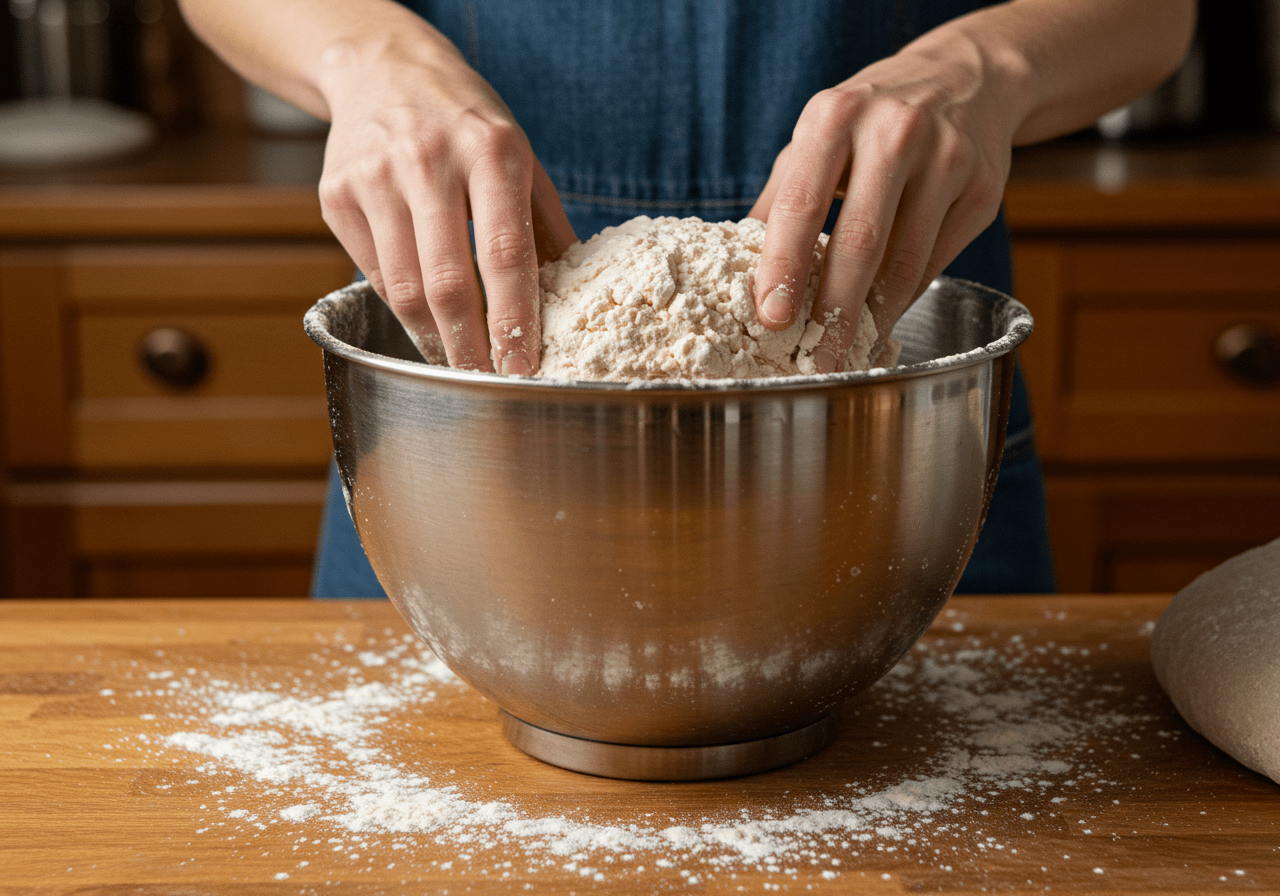
Step 2: Allow the Dough to Rest – Autolyse for Gluten Development
Cover the dough with a damp cloth and let it rest for about 30 minutes at room temperature. This process, known as autolyse, helps to hydrate the flour and encourages gluten development, which is crucial for the texture of your rosemary sourdough bread. Good gluten development ensures a beautiful rise and a delightful chewiness. For another simple bread recipe, check out our Simple Cloud Bread Recipe.
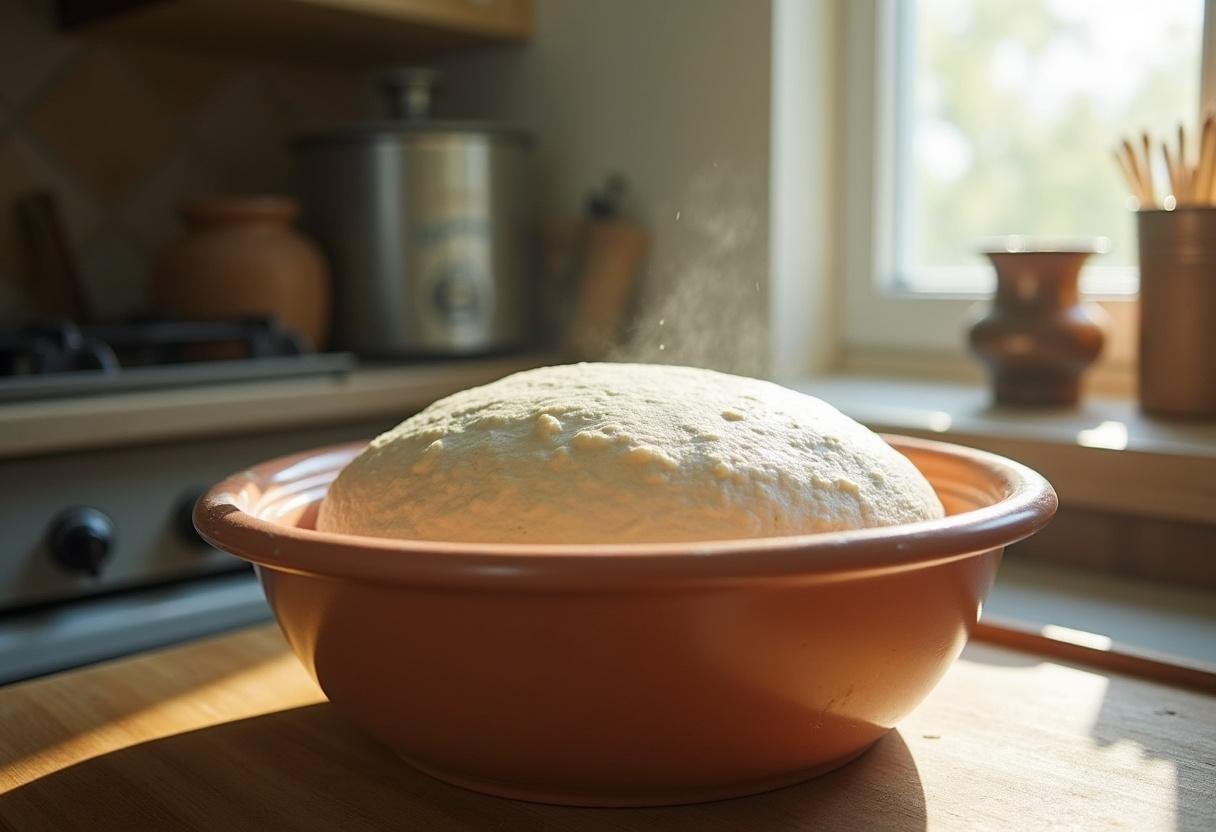
Step 3: Shape the Loaf – Creating Tension and Form
After the resting period, gently transfer the dough onto a floured surface. Shape it into a round loaf by tucking the edges towards the center. Use your hands to create surface tension and place it seam side down in a floured banneton. A well-shaped loaf ensures even baking and a beautiful crust. Consider watching videos online to perfect your shaping technique for the best rosemary sourdough bread.
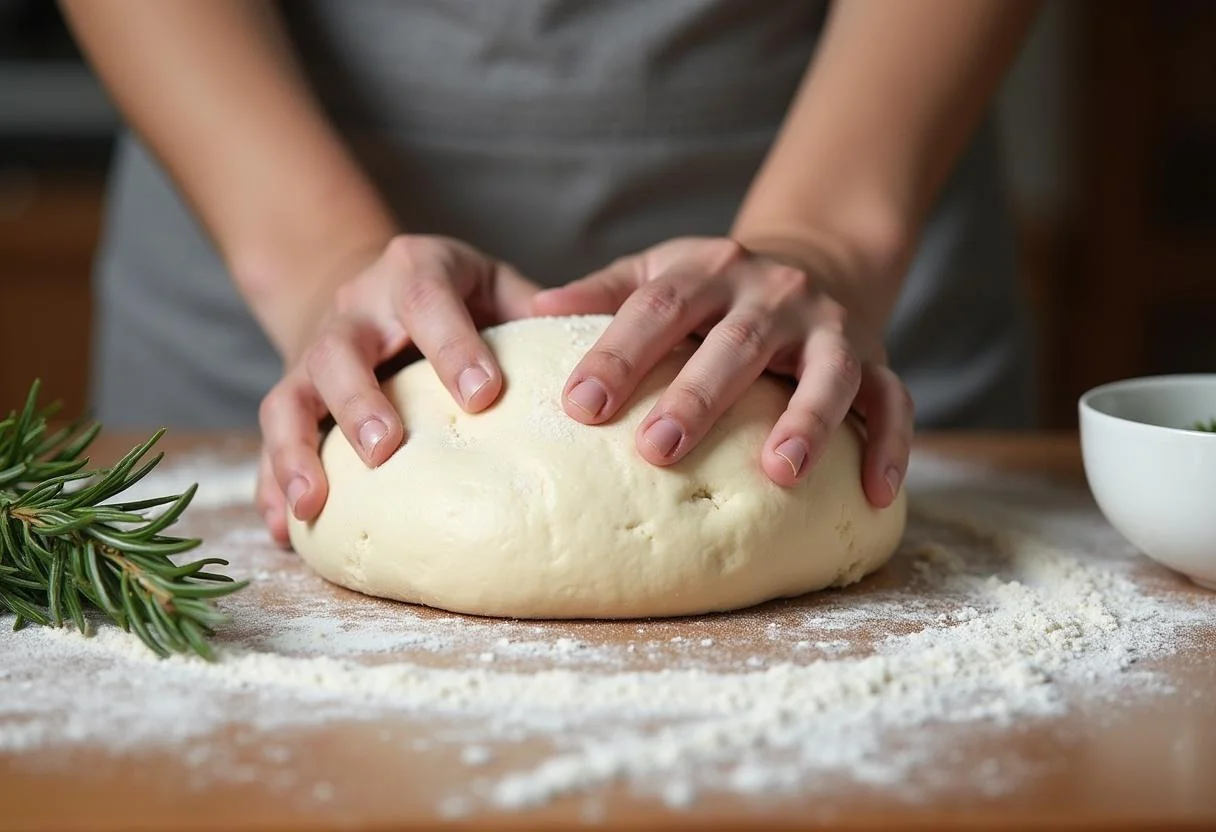
Step 4: Let it Rise Again – Proofing for Optimal Texture
Cover the dough in the banneton and leave it to rise for another 1-3 hours, depending on your kitchen temperature. The dough should double in size and become puffy, indicating that it is ready for baking. This final rise is crucial for achieving that light and airy texture in your rosemary sourdough bread. For more tips on sourdough baking, visit this resource: Farmhouse on Boone.
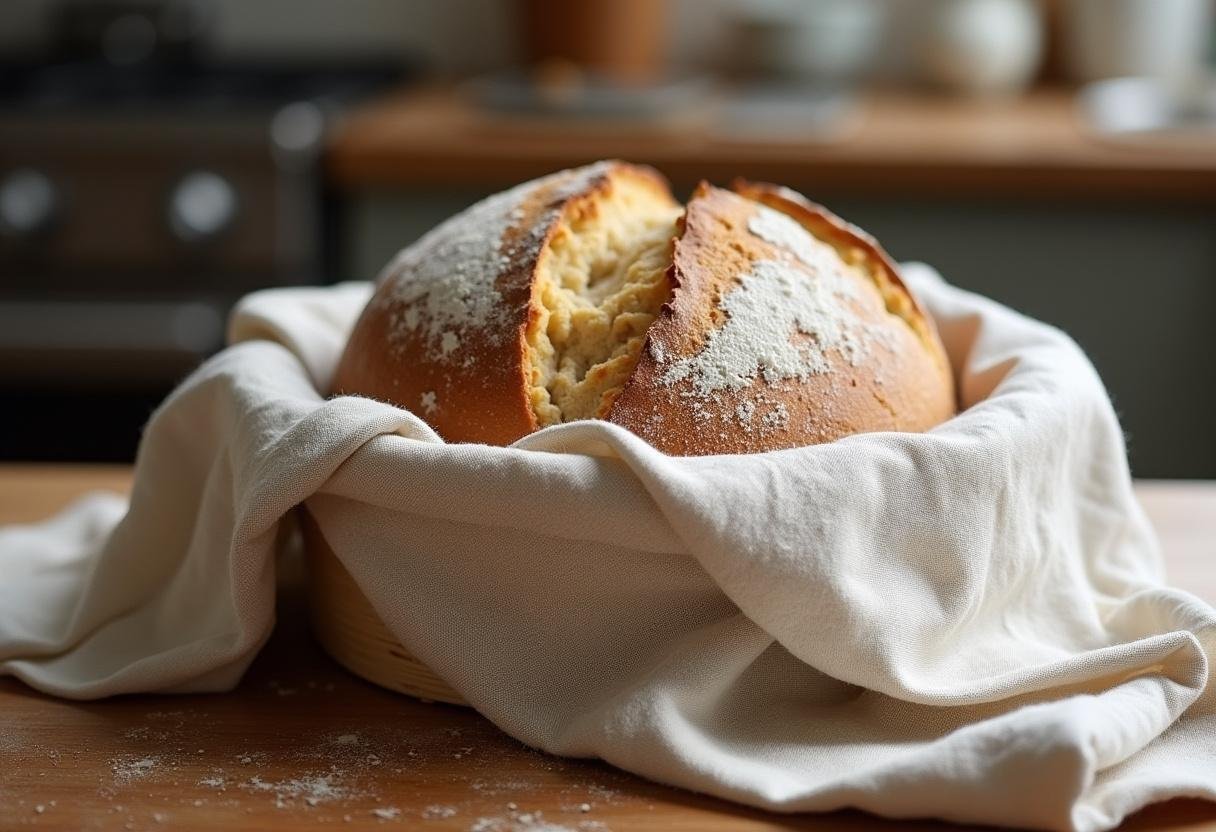
4. Baking the Rosemary Sourdough Bread – Achieving the Perfect Crust
Preheat your oven to 450°F (232°C) during the final rise. Once the dough has risen, carefully invert it onto a baking sheet lined with parchment paper. Score the top with a sharp knife to allow steam to escape while baking. Bake for 30-35 minutes or until the crust is a golden brown. The scoring not only helps with the bread’s expansion but also adds an artistic touch to your rosemary sourdough bread. For something equally rewarding, try our Miso Chocolate Chip Cookies.
5. Storage Tips – Keeping Your Sourdough Fresh
Allow the rosemary sourdough bread to cool completely before slicing. Store it in a paper bag or a bread box at room temperature for up to 3 days or freeze it for longer preservation. To reheat, simply pop it in a toaster or warm oven. Properly stored sourdough maintains its texture and flavor, ensuring you enjoy every slice as if it were freshly baked. If you’re looking for other delicious bread ideas, check out our comprehensive sourdough bread guide.
6. Serving Suggestions – Enhancing the Flavor Experience
Enjoy your homemade rosemary sourdough bread fresh out of the oven with butter, or use it to create delicious sandwiches. Pair it with olive oil and balsamic vinegar for an exquisite appetizer, or serve it alongside hearty soups to complement the flavors. This versatile bread is perfect for any meal. For lunch ideas to pair with your bread, consider our lunch recipes, or even high-protein options like these High Protein Lunch Ideas.
7. FAQs – Troubleshooting Your Rosemary Sourdough Bread
Q1: How do I know when my sourdough bread is ready to bake?
A1: The dough should have doubled in size and be puffy to the touch. Additionally, you can perform the “poke test”: gently poke the dough, and if it springs back slowly, it’s ready to bake! This indicates that the fermentation process has reached its peak, and the bread will have a great oven spring. Also, check your kitchen temperature; a warmer environment can speed up the process.
Q2: Can I use dried rosemary instead of fresh?
A2: Yes, you can substitute dried rosemary in a pinch. Use about one-third the amount, as dried herbs tend to be more potent. However, fresh rosemary will provide a more vibrant and aromatic flavor to your rosemary sourdough bread. If you do use dried rosemary, consider blooming it in a bit of olive oil before adding it to the dough to help release its flavors.
8. Conclusion: The Joy of Baking Rosemary Sourdough Bread
Your kitchen will be filled with the tantalizing aroma of freshly baked rosemary sourdough bread. With a crispy crust and chewy interior, this bread is sure to become a staple in your home. Share your baking experience with friends and family and watch them devour every last slice! Remember, baking is as much about the process as it is about the result. Enjoy every step, and don’t be afraid to experiment to find your perfect loaf.
9. Conclusion: Embrace the Art of Sourdough
Making your own rosemary sourdough bread can be a rewarding cooking project. Not only does it result in a delicious product, but it also brings a sense of accomplishment. We hope this recipe inspires you to try baking your own bread. Enjoy every bite, and happy baking! For more quick and easy recipes, browse our breakfast recipes for inspiration.
“`
Print
Rosemary Sourdough Bread Recipe
This Rosemary Sourdough Bread Recipe combines the tangy richness of sourdough with the aromatic essence of fresh rosemary, making it an ideal companion for soups, salads, or cheese platters. Enjoy the delightful texture and flavor of homemade bread with step-by-step instructions to impress your family and friends.
- Total Time: 1 hour 5 minutes
- Yield: 1 loaf
Ingredients
- 500g bread flour
- 350ml water
- 100g active sourdough starter
- 10g sea salt
- 2 tablespoons fresh rosemary, finely chopped
Instructions
- In a large mixing bowl, combine the bread flour, water, sourdough starter, and sea salt. Mix until a shaggy dough forms. Add the freshly chopped rosemary and mix until well incorporated.
- Cover the dough with a damp cloth and let it rest for about 30 minutes at room temperature.
- Transfer the dough onto a floured surface. Shape it into a round loaf and place it seam side down in a floured banneton.
- Cover the dough in the banneton and leave it to rise for another 1-3 hours until it doubles in size and becomes puffy.
- Preheat your oven to 450°F (232°C). Once risen, invert the dough onto a baking sheet lined with parchment paper. Score the top and bake for 30-35 minutes until golden brown.
Notes
- Allow the bread to cool completely before slicing.
- Store in a paper bag or bread box for up to 3 days or freeze for longer preservation.
- Serve warm with butter, in sandwiches, or with olive oil and balsamic vinegar.
- Prep Time: 30 minutes
- Cook Time: 35 minutes
- Category: Bread
- Method: Baking
- Cuisine: American
- Diet: Vegetarian
Nutrition
- Serving Size: 1 slice
- Calories: 150 Kcal
- Sugar: 0g
- Sodium: 200mg
- Fat: 1g
- Saturated Fat: 0g
- Unsaturated Fat: 1g
- Trans Fat: 0g
- Carbohydrates: 30g
- Fiber: 2g
- Protein: 5g
- Cholesterol: 0mg


